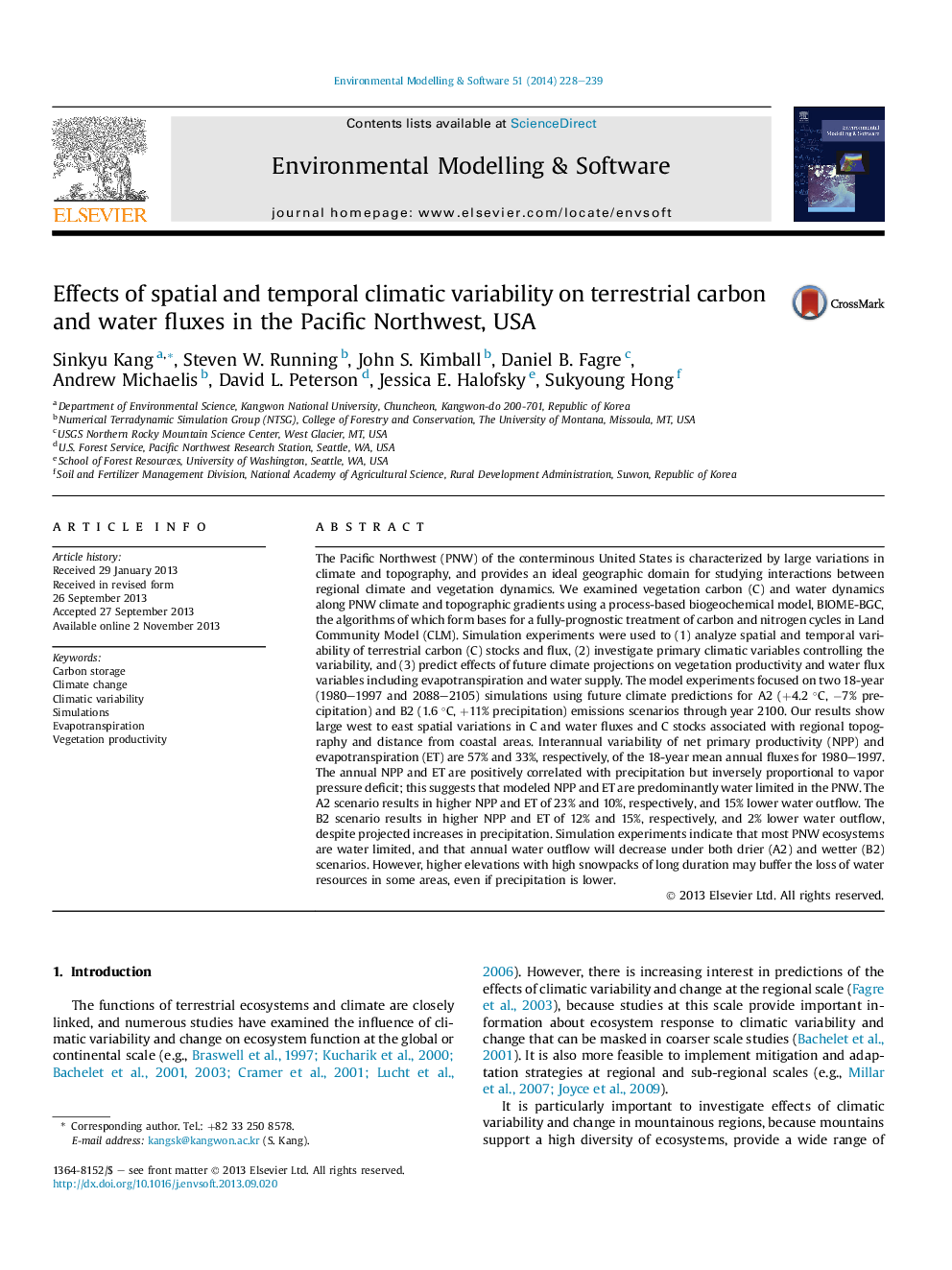| کد مقاله | کد نشریه | سال انتشار | مقاله انگلیسی | نسخه تمام متن |
|---|---|---|---|---|
| 6964148 | 1452299 | 2014 | 12 صفحه PDF | دانلود رایگان |
عنوان انگلیسی مقاله ISI
Effects of spatial and temporal climatic variability on terrestrial carbon and water fluxes in the Pacific Northwest, USA
ترجمه فارسی عنوان
اثرات تغییرات اقلیمی فضایی و تاریخی بر کربن و فرسایش زمین در شمال غرب ایرلند، ایالات متحده
دانلود مقاله + سفارش ترجمه
دانلود مقاله ISI انگلیسی
رایگان برای ایرانیان
کلمات کلیدی
ذخیره سازی کربن، تغییر آب و هوا، تنوع آب و هوا، شبیه سازی، تبخیر تعرق، بهره وری گیاهی،
موضوعات مرتبط
مهندسی و علوم پایه
مهندسی کامپیوتر
نرم افزار
چکیده انگلیسی
The Pacific Northwest (PNW) of the conterminous United States is characterized by large variations in climate and topography, and provides an ideal geographic domain for studying interactions between regional climate and vegetation dynamics. We examined vegetation carbon (C) and water dynamics along PNW climate and topographic gradients using a process-based biogeochemical model, BIOME-BGC, the algorithms of which form bases for a fully-prognostic treatment of carbon and nitrogen cycles in Land Community Model (CLM). Simulation experiments were used to (1) analyze spatial and temporal variability of terrestrial carbon (C) stocks and flux, (2) investigate primary climatic variables controlling the variability, and (3) predict effects of future climate projections on vegetation productivity and water flux variables including evapotranspiration and water supply. The model experiments focused on two 18-year (1980-1997 and 2088-2105) simulations using future climate predictions for A2 (+4.2 °C, â7% precipitation) and B2 (1.6 °C, +11% precipitation) emissions scenarios through year 2100. Our results show large west to east spatial variations in C and water fluxes and C stocks associated with regional topography and distance from coastal areas. Interannual variability of net primary productivity (NPP) and evapotranspiration (ET) are 57% and 33%, respectively, of the 18-year mean annual fluxes for 1980-1997. The annual NPP and ET are positively correlated with precipitation but inversely proportional to vapor pressure deficit; this suggests that modeled NPP and ET are predominantly water limited in the PNW. The A2 scenario results in higher NPP and ET of 23% and 10%, respectively, and 15% lower water outflow. The B2 scenario results in higher NPP and ET of 12% and 15%, respectively, and 2% lower water outflow, despite projected increases in precipitation. Simulation experiments indicate that most PNW ecosystems are water limited, and that annual water outflow will decrease under both drier (A2) and wetter (B2) scenarios. However, higher elevations with high snowpacks of long duration may buffer the loss of water resources in some areas, even if precipitation is lower.
ناشر
Database: Elsevier - ScienceDirect (ساینس دایرکت)
Journal: Environmental Modelling & Software - Volume 51, January 2014, Pages 228-239
Journal: Environmental Modelling & Software - Volume 51, January 2014, Pages 228-239
نویسندگان
Sinkyu Kang, Steven W. Running, John S. Kimball, Daniel B. Fagre, Andrew Michaelis, David L. Peterson, Jessica E. Halofsky, Sukyoung Hong,
